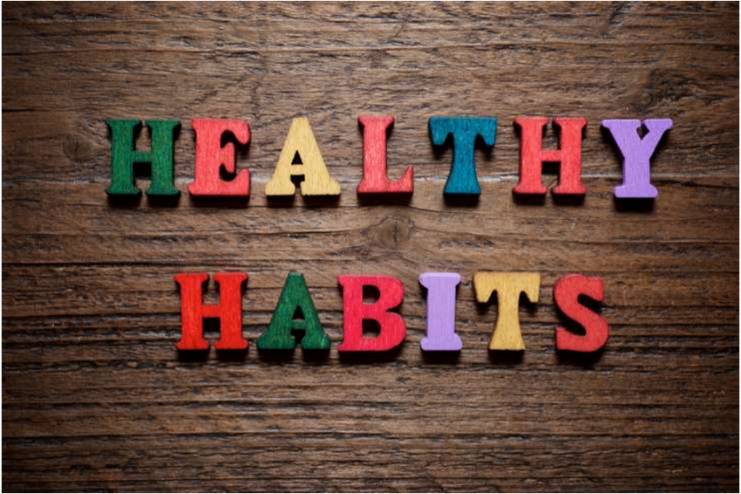Affiliate Disclaimer
Some links in this article are affiliate links. We may earn a small commission if you make a purchase through these links, at no extra cost to you. We only recommend products we find useful to our readersSeptember is Childhood Obesity Awareness Month, a vital reminder to manage obesity in young children. Obesity in childhood extends beyond the acute health risks associated with excess body fat. A lifetime of weight problems and health issues can result from early obesity.
Studies carried out between 2017 and 2020 by the U.S. Centers for Disease Control and Prevention (CDC) indicate that 19.7% of children and adolescents in the country between the ages of 2 and 19 were obese. Children who gain excess weight are more likely to grow up with persistent, life-threatening illnesses.
Obesity has significant adverse effects on the mind, body, and self-esteem, as well as the likelihood of developing chronic illnesses. Healthy behaviors and early intervention can help us lay a solid foundation for our kids’ long-term health. Parents must take the initiative and support their children to grow up with the skills and self-assurance necessary to lead healthy, happy lives.
Causes of Childhood Obesity
A poor diet and a lack of physical activity and regular exercise are primary reasons for childhood obesity, but more often, emotional and social variables have played a significant role in the rise of childhood weight gain.
Emotional eating is a crucial factor to consider. Youngsters turn to food for solace when experiencing stress, worry, or emotional upheaval. Overeating as a coping method might result in weight gain and other destructive behaviors.
Social media influence is also significant. Children may acquire unhealthy eating habits and unfavorable body ideals due to the constant presentation of unrealistic body standards on the internet and in the media. Constantly comparing yourself to these polished pictures might lead to eating disorders and feelings of inadequacy.
Parental impact is also significant. A family’s food habits, activity level, and general lifestyle choices directly impact a child’s health. Parents can help their children follow a healthy path by establishing supportive surroundings and embracing healthier habits.
How to Build Healthy Habits That Last a Lifetime

The food habits your child develops in their early years will support them in leading a healthy lifestyle as adults. Children exposed to these practices at a young age tend to naturally gravitate toward making healthier decisions as they age.
Mindful eating for kids is a vital part of this approach. Teaching kids to pay attention to their bodies and recognize their hunger signals instead of putting too much emphasis on calorie tracking helps them develop a healthy relationship with food at an early age. This method encourages them to eat more instinctively and choose nutritious foods without feeling constrained.
Encouraging fitness is another critical component of fun. When families incorporate physical activity into everyday life through games, sports, and activities, children learn to associate exercise with enjoyment rather than a chore. Staying active can become a fun part of their routine with imaginative activities like dance parties, obstacle courses, or family excursions.
Ask your child’s healthcare practitioner for advice on choosing and preparing a range of foods or a fitness routine for your family. If you need assistance with diet, they can recommend a trained dietician. They can also help you find local resources that provide many options.
Parental Playbook for Developing Healthy Habits

All parents want the best for their kids, and part of that is assisting them in forming wholesome eating habits. It cannot be easy to satisfy a healthy nosher in the world of sugary snacks and quick food. Nonetheless, you may put your child on the road to lifelong health with the right strategy. This step-by-step program can help parents establish long-term wellness habits.
Be a Role Model: Kids look up to their parents, so set a good example by eating well as a family and encouraging a positive outlook on fruits, vegetables, and nutrition. This will impact the choices they make.
Establish a Healthy Eating Environment: Keep your kitchen well-stocked with wholesome options to reduce the availability of processed foods and sugary snacks. Your youngster will find it easier to make healthy choices when they are available.
Reward Healthier Choices: This encourages children to adopt better practices. Use entertaining and motivating rewards, such as a sticker chart for eating your veggies or additional playtime for being active. Keep them interested and motivated, and acknowledge their efforts and minor accomplishments.
Make Eating Healthy Fun: You can make eating healthy fun by excitingly arranging fruits and veggies. You can also use playful methods to persuade kids to eat healthily.
Establish Regular Meal and Snack Times: Provide consistent eating schedules to assist kids in forming mealtime habits. Nutritious snacks keep energy levels steady and prevent overeating during big meals.
Include the Entire Family to Create a Nurturing Atmosphere: Prioritize family health by establishing shared objectives and engaging in activities. Shared activities, such as preparing wholesome meals together or enrolling in a fitness class, cement family ties and promote positive lifestyle choices.
Using these practical, healthy parenting guidelines, you can provide an environment that promotes long-term wellness for your children and the whole family.
Use Technology to Make Exercise and Diet More Fun

Kids familiar with technology can benefit from creative ways to promote their health. Kids’ fitness apps provide a fun approach to motivating physical activity. Super Stretch Yoga is one of those entertaining, family-friendly yoga apps designed with kids in mind.
GoNoodle makes exercise enjoyable and engaging by transforming physical activity into interactive adventures.
Healthy Eating Challenges aims to make nutrition education fun by utilizing digital resources. Fooducate and similar platforms gamify education by rewarding healthy eating choices and monitoring individual progress.
However, it’s crucial to balance screen time. Technology can encourage positive behaviors, but parents must establish boundaries to prevent excessive screen time. Setting boundaries ensures that digital technologies enhance real-world interactions and physical activities rather than taking their place.
Adopting these technological solutions can improve kids’ health and wellness involvement in a contemporary, interactive manner.
Tackle Obesity Through Schools and Community

Preventing childhood obesity is the joint duty of the federal, state, and local governments, businesses, communities, and schools.
Schools play a very critical role in children’s health. School programs that provide healthier lunch options and extensive physical instruction can significantly improve children’s eating and exercise habits. The National School Lunch Program is one example of how schools can promote the health of their students.
Community support is just as significant. Children have access to recreational possibilities and local community facilities, which offer physical activity and healthy living opportunities. Participating in initiatives run by neighborhood groups like the YMCA can be advantageous.
Governmental initiatives are also important. In addition to announcing the First Lady’s role in spearheading a national public awareness campaign to improve our children’s health, President Obama established a Task Force on Childhood Obesity in 2010, making it clear that his goal was to solve the issue of childhood obesity within the generation. This initiative included policies and campaigns like the Let’s Move! Initiative.
Conclusion
As we’ve seen, our decisions today set the stage for a healthier tomorrow. Minor, steady improvements are the foundation of healthy habits for children and family health. Adopting helpful materials and practicing realistic tactics may make a big difference in your child’s well-being. Take Action Now and see how these suggestions open the door to long-term health advantages by incorporating them into your daily practice.
References
- https://health.clevelandclinic.org/long-term-effects-of-childhood-obesity
- https://www.cdc.gov/obesity/strategies/early-care-education/helping-young-children-thrive/index.html
- https://www.healthiergeneration.org/sites/default/files/documents/20181219/ec7f1a0d/2018%20Annual%20Impact%20Report.pdf
- https://www.ncbi.nlm.nih.gov/pmc/articles/PMC4555982
- https://www.aap.org/en/patient-care/institute-for-healthy-childhood-weight
- https://www.ncbi.nlm.nih.gov/pmc/articles/PMC7473502
- https://www.healthychildren.org/English/health-issues/conditions/obesity/Pages/The-Emotional-Toll-of-Obesity.aspx
- https://my.clevelandclinic.org/health/diseases/9467-obesity-in-children
- https://www.ncbi.nlm.nih.gov/pmc/articles/PMC7146362
- https://nieer.org/research-library/healthy-preschool-habits-can-last-lifetime
- https://letsmove.obamawhitehouse.archives.gov
- https://www.ymca.org
- https://www.ers.usda.gov/topics/food-nutrition-assistance/child-nutrition-programs/national-school-lunch-program
- https://adventuresofsuperstretch.com
- https://www.gonoodle.com
- https://www.fooducate.com
- https://communitychoicepeds.com/understanding-childhood-obesity-empowering-moms-to-promote-healthy-habits
In this Article




















